Michael Okuda’s graphic designs are an indelible part of the Star Trek franchise, and now’s your chance to bring them into your home.
From the press release:
Austin, Texas – November 4, 2016 Bye Bye,Robot is announcing the launch of two new Star Trek collectible sticker sheets created by Star Trek’s own Michael Okuda.
As Star Trek‘s lead graphic designer, with the franchise from Star Trek: The Next Generation through Star Trek:Enterprise and seven Star Trek feature films, Michael Okuda is the ultimate expert in Star Trek graphics. He is personally responsible for most of the graphics that made the shows so unique. Some of his work you might recognize includes the LCARS graphics seen on computer and display screens, and the capsule-shaped panel identification labels found on everything from turbolift doors to storage areas. It is these capsule-shaped labels that are now officially available to fans for the first time ever.
When asked about the origin of the design of the new stickers Okuda says, “I used those labels everywhere on the Enterprise-D, as well as on most of the other Starfleet ships on those shows. I think fans recognize it as part of the visual identity of 24th century Starfleet. When we put those labels on the props and set dressing, they suddenly looked like they belonged on the StarshipEnterprise. The fine print on the capsule labels was never intended to be legible on screen, so we used to fill them with goofy gags for our amusement and for the amusement of the cast and crew. Of course, the fans found out about the gags, so when we had fans visiting the set, they’d always look for them, because they were in on our little joke.”
Given that there were so many different uses for these iconic labels within the shows, Bye Bye, Robot chose to focus on two distinct themes for the first two sets. The first sheet offers labels within a personal device theme that can be used in a fan’s daily life, including Library Computer Access And Retrieval System (personal computers), Personal Access Display Device (tablet devices), and Personal Communicator (cell phones). The second sheet offers labels within a personal spaces theme; including Crew Quarters, Personal Hygiene Facility, and Garment Stowage Facility.
“We are thrilled to be working with Michael Okuda on these new stickers. It’s incredibly exciting for us to be announcing these labels because they embody so much of the very atmosphere of Starfleet. As with the original labels, found in the shows, these labels also contain inside jokes that fans of Star Trek will recognize immediately. These wonderfully familiar labels are the first in what we anticipate to be a large run of items in the new Michael Okuda: Signature Series,” mentions Bye Bye, Robot Co-Founder Charity Wood.
The new sticker sheets have been designed for both collection and actual use. The three labels within each sheet are removable for actual use or can be left in place and displayed as a single unit. They are printed on 4×6” sized durable vinyl that is UV and weather resistant. This, in conjunction with a strong adhesive backing, allows the stickers to be used indoors or outdoors. The overall 4×6” size also allows for easy display as a collectable, as it falls within standard postcard sizes.
Under license by CBS Consumer Products, each sticker sheet is printed on UV and weather resistant, durable vinyl and is priced at $9.99 each. They are available in the U.S.A. for purchase, beginning today, from byebyerobot.com at the price listed above, plus shipping.
*Not hand autographed. The included signature is part of the print series theme.
™ & © 2016 CBS Studios Inc. STAR TREK and related marks are trademarks of CBS Studios Inc. All Rights Reserved.
# # #
About Michael Okuda
Michael Okuda was Star Trek‘s lead graphic designer from Star Trek: The Next Generation through Star Trek:Enterprise, and on all of the movies made in that period. He was responsible for the control panels, computer screens, alien writing, symbols, and signage on all those shows. That work earned him screen credit on more Star Trek than anyone except Gene Roddenberry. His other credits include Clint Eastwood’s Sully. As a big fan of the real space program, Mike has also done numerous emblems and logos for NASA, including the crew patch for the STS-125 mission of Space Shuttle Atlantis to the Hubble Space Telescope. Mike’s work has earned him three Emmy nominations for Best Visual Effects, plus NASA’s Exceptional Public Service Medal. Along with his wife, Denise, Mike is co-author of the newly-updated TheStar Trek Encyclopedia.
About Bye Bye Robot, LLC
Founded in 2011 by Charity and Chris Wood, Bye Bye Robot is an independent publisher of art. Currently, they are a licensed seller of original works of art based on all of Gene Roddenberry’s live action Star Trek™ TV series plus Original Series and Star Trek: The Next Generation movies. Bye Bye Robot is dedicated to creating deeply immersive, visually spectacular pieces of art that will amaze and inspire viewers for generations.
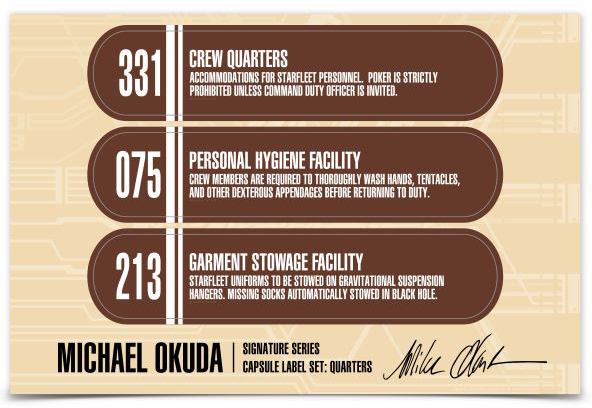
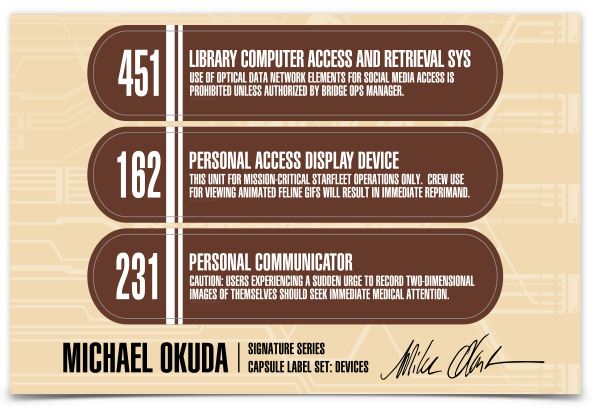

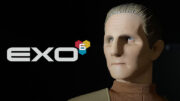
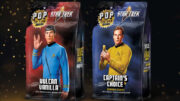
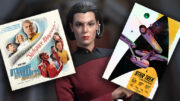
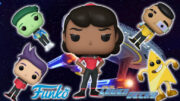
http://www.startrek.com/article/restored-tos-navigation-helm-console-ready-for-spaceflight
No feline GIFs? Not even Spot?!
I wish these didn’t have the “funny” phrases. Would prefer a more serious in-universe sticker.
Apparently, the stickers used to film all the different shows also contained these funny phrases. We just didn’t see it on screen because it was too small. So you could say that Starfleet has a sense of humor in labeling its stuff.
DIGINON,
Re: We just didn’t see it on screen because it was too small.
For the resolution of the TVs of the era in which they were produced, yes, but not so small that some couldn’t be discerned from what the 35mm film captured and can be discerned on more modern equipment.
Re: Starfleet has a sense of humor
Or their labelmaker’s AI which, come to think of it, one of the animated series’ episodes had the Enterprise’s computer develop a practical joker’s sense of humor as a result of a “nervous breakdown” it experienced in an ion cloud.